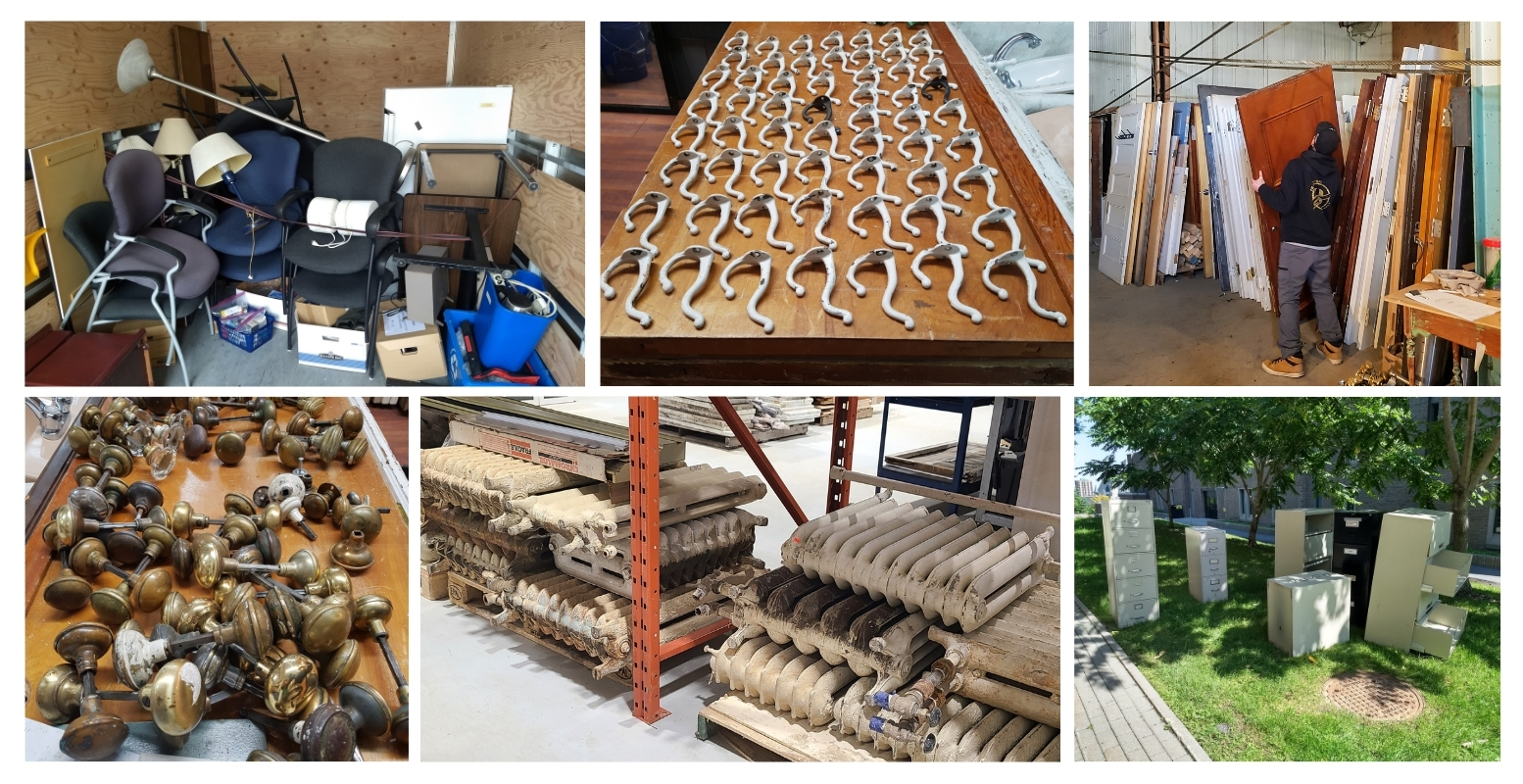
Many of McGill’s construction projects involve upgrading existing buildings. In many cases, these spaces need to be emptied of all movable goods, such as furniture, appliances, and other building components, before demolition and renovation can start.
In a recent push for a more complete approach toward waste reduction related to renovations and decommissioning of buildings at McGill, several projects advanced the reuse of furniture and building components to minimize the quantity of materials ending up in recycling or landfill.
New homes for thousands of items
Buildings involved in these efforts include the four row houses on Pine Avenue designated to host the Sylvan Adams Sports Science Institute (SASSI), Purvis Hall, 3715 Peel, and facilities being repurposed as part of the New Vic project.
Between April 2022 and November 2023, over 2,600 items were either reused within the University or donated to external organizations, such as student groups, educational institutions, and non-profit organizations. Furniture and appliances comprised 65 per cent of these items, including desks, tables, chairs, storage units, refrigerators, and microwaves. Smaller items, such as mirrors, lamps, kitchenware, and office supplies, accounted for 30 per cent, while building components like wood flooring, doors, and radiators made up the final 5 per cent.
“Approximately 3,100 items were identified as having the potential for reuse, meaning we found a new home for 83 per cent of them. This resulted in an approximate 45.6 tonnes of avoided carbon dioxide emissions, or the equivalent of the capacity of over 2 million trees absorbing CO2 for a day,” says Jose Romo, Sustainability Projects Officer, Design Services, Facilities Management and Ancillary Services.
The CO2 equivalent is calculated based on the estimated emissions associated with the manufacturing of new products for which the purchase was avoided by reusing existing furniture.
Less landfill
At the Pine Avenue row houses, where more than 600 pieces of furniture had to be removed, 68 per cent found a new home within McGill or as donations to charities. Additionally, 27 per cent went to recycling facilities and only approximately 5 per cent ended up in landfill.
“Beyond furniture, we have increased the recovery of other building components, including wooden doors, door hardware, lighting fixtures, bathroom accessories, coat hooks and even a safe,” adds Romo, “And where possible and desirable, existing building components are (re)integrated into the design of the renovations themselves. At the SASSI project, these include glazed doors, stained-glass windows, fireplaces, and more.”

When gutting the buildings on Pine, I wish more of the lumber had been reused. They just don’t grow trees like that anymore. 🙁
Unfortunately, some building components and materials cannot be reused because of their condition. However, we were able to recover and donate 1,500 square feet of hardwood flooring and 64 wooden doors. Additionally, the wooden stairs and handrails are being incorporated into the renovation of the row houses on Pine Avenue.
Would it be possible for an alumni, like myself, to have free access to view & acquire some of these reuse-able items?
Thank you for your interest! Unfortunately, we’re currently unable to provide individuals access to view and acquire these kinds of items.